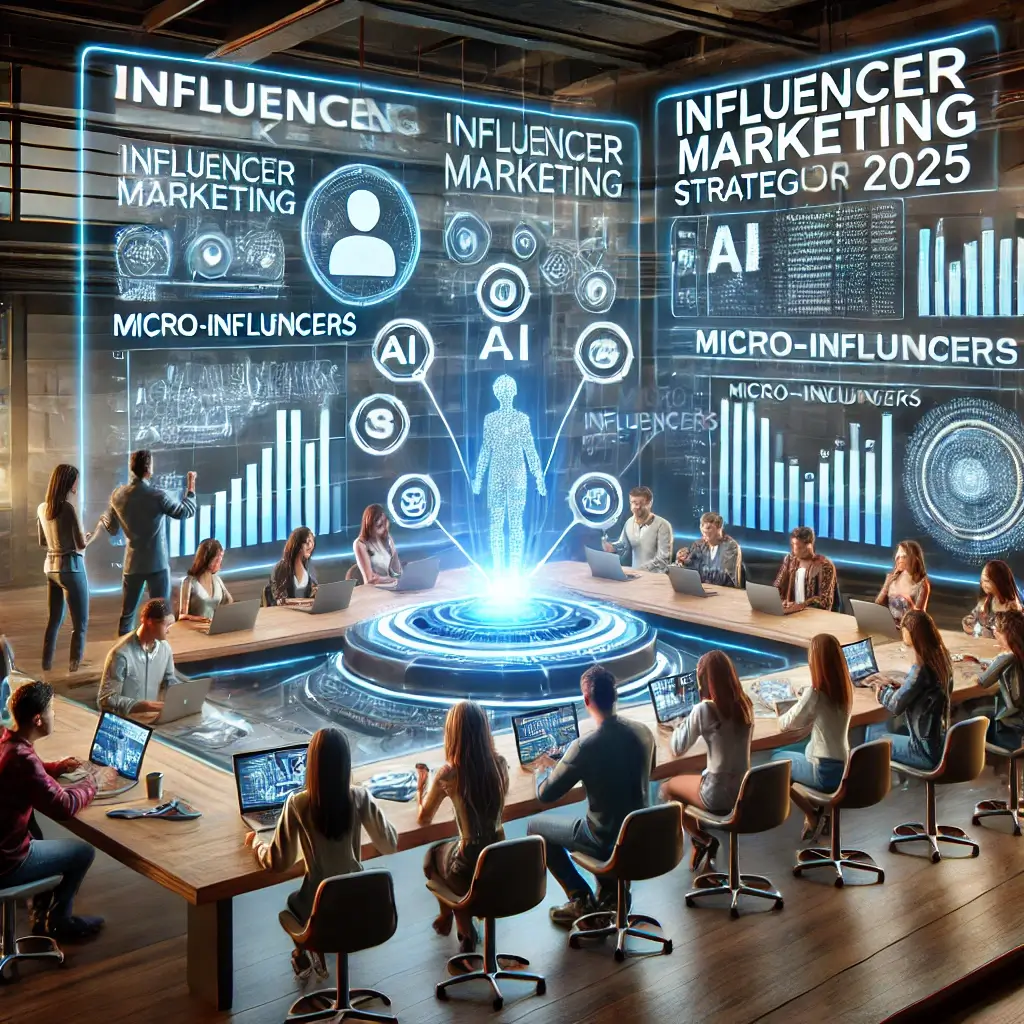The Evolution of Influencer Marketing
Influencer marketing has evolved from a nascent trend to a cornerstone of modern digital strategies. By 2025, this industry is expected to surpass $24 billion globally, driven by personalized, data-driven, and authentic consumer engagement. Businesses and marketers must adapt to these changes not only to survive but to thrive in an increasingly competitive landscape.
Key Driving Factors Behind the Evolution
This evolution is driven by several key factors, including the proliferation of artificial intelligence (AI), heightened demand for transparency, and a growing preference for micro-influencers. Today’s audiences seek genuine connections, prompting brands to align with influencers who personally and culturally resonate with their target demographics. AI-driven tools enable marketers to form strategic partnerships, improving campaign efficiency and outcomes.
The Shift Toward Long-Term Collaborations
Another critical trend is the shift toward long-term collaborations with influencers, which foster sustained trust and audience engagement. As short-term campaigns become less effective, marketers focus on integrating these partnerships into broader content strategies. Furthermore, measuring return on investment (ROI) has become paramount, with advanced tools allowing brands to analyze metrics such as engagement, conversions, and audience sentiment.
Article Purpose and Scope
This article delves into actionable influencer marketing strategies for 2025, backed by data, case studies, and industry insights to help you navigate this ever-evolving field successfully.
Key Strategies for 2025
Key Strategies for 2025
Strategy 1: Embracing Micro-Influencers
Micro-influencers—typically defined as those with 10,000 to 100,000 followers—excel in delivering higher engagement rates compared to macro-influencers. According to Influencer Marketing Hub’s 2024 report, micro-influencers achieve 60% more engagement at substantially lower costs.
Micro-Influencer Case Study
Case Study: A sustainable fashion brand partnered with 30 micro-influencers who advocate eco-friendly lifestyles. The campaign resulted in a 35% increase in website traffic and a 20% boost in sales over two months, showcasing the power of targeted, authentic partnerships.
Strategy 2: Utilizing AI for Targeted Outreach
AI tools like HypeAuditor and Upfluence are transforming influencer selection. These platforms provide detailed insights into audience demographics, engagement rates, and authenticity metrics, enabling brands to identify influencers who align with their goals.
AI-Powered Targeting Example
Example: A technology firm employed AI to pinpoint influencers with significant Gen Z audiences interested in productivity apps. This precision targeting drove a 40% increase in app downloads compared to traditional outreach methods.
Strategy 3: Prioritizing Authentic Collaborations
Authenticity is central to successful influencer marketing. Campaigns that grant influencers creative freedom—as opposed to rigidly scripted promotions—tend to resonate more deeply with audiences.
Authenticity Case Study
Case Study: A beverage company collaborated with a TikTok creator who incorporated the product into unscripted, daily content. This authentic approach led to a 45% increase in user-generated content and a 25% boost in brand trust metrics.
Strategy 4: Measuring Success with Advanced Tools
Precise ROI measurement ensures sustainable influencer marketing budgets. Tools like Sprout Social and Aspire allow brands to track metrics such as engagement, sentiment, and conversions with accuracy.
ROI Measurement Example
Example: An online education platform utilized advanced analytics to attribute new enrollments to specific influencer campaigns. These insights enabled a refined strategy, improving cost-efficiency by 30%.
Strategy 5: Leveraging Long-Term Collaborations
Building long-term relationships with influencers creates sustained trust and consistent messaging. These partnerships integrate influencers into broader content strategies, resulting in greater audience retention and loyalty.
Long-Term Collaboration Case Study
Case Study: A health and wellness brand formed a year-long collaboration with a fitness influencer, featuring monthly updates and challenges. This approach led to a 50% increase in repeat customers and a 15% rise in subscription renewals.
Conclusion
Influencer marketing in 2025 epitomizes the intersection of innovation, data-driven strategies, and authentic storytelling. By focusing on micro-influencers, leveraging AI, prioritizing genuine collaborations, measuring ROI meticulously, and fostering long-term relationships, brands can unlock unparalleled growth opportunities. Marketers who stay adaptable and innovative will lead the way in this dynamic and ever-changing landscape.
References
Influencer Marketing Hub. “The State of Influencer Marketing in 2024.” Published 2024. Link
HypeAuditor. “How AI Tools are Shaping the Future of Influencer Marketing.” Published 2024. Link
Forbes. “The Power of Authentic Influencer Collaborations.” Published 2023. Link
Aspire. “AI-Driven Influencer Selection: A Game Changer.” Published 2024. Link
Sprout Social. “Advanced Analytics for Influencer Marketing.” Published 2023. Link
